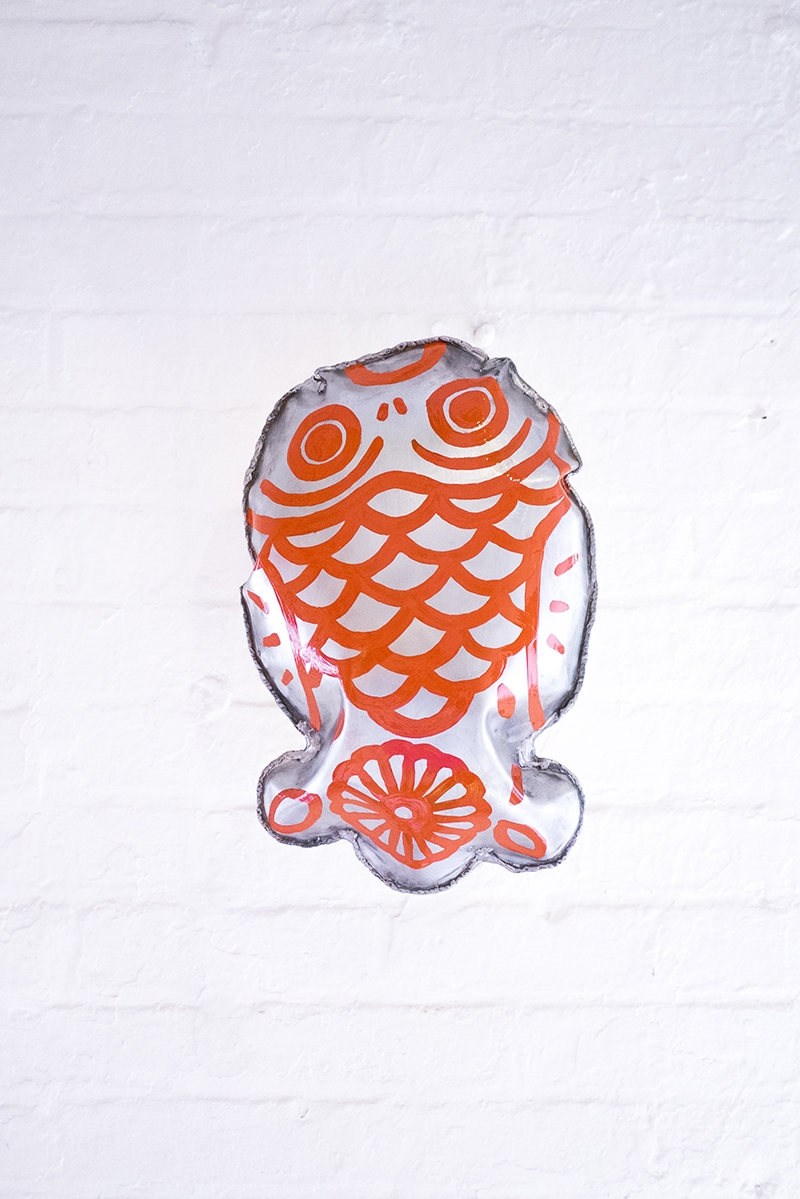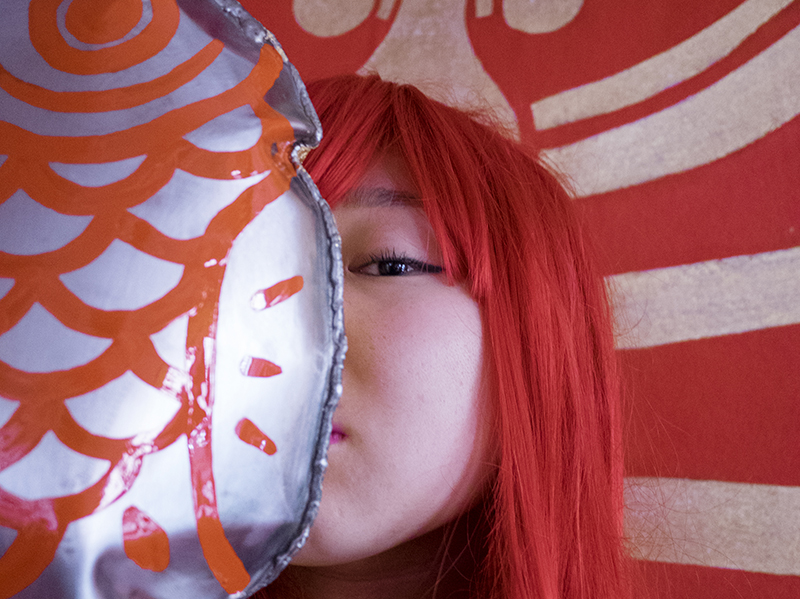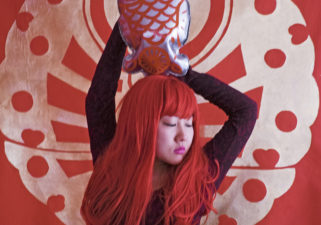Installation/Painting/Sculpture
HOTEL KAMIKAZE
 About the word “Kamikaze” fell a curse. After World War II, this sense is captured in a prison, forbidden to mean anything other than the metaphor that named the famous Japanese suicide pilots. But the two Kami Kaze signs name the sacred figure of the divine wind, an ethereal being who wants to flee from these grids in which it name was put, a deity who still blows his contemporary airs in the weathervanes, fans and flags, birds and insects. A huge butterfly encoded in familiar legend appears as a golden symbol on the wall of the exhibition, a designed symbol that Ayakamay inherited as a tattoo on its blood. Perhaps this golden butterfly can be the logo, mark or seal of this Hotel Kamikaze, a comfortable place to address this discomfort still present in our common past between East and West, between Japan and the United States. In fact, this sacred wind, still trapped, threatens to be caught in the lightness of the air, like a cloud or a mirror that shows us how difficult it is to find translations. There is a secret incommunicability in everything we try to shed and convert between these two poles of the world, as if the curse of words were this impossibility of translations. Ayakamay lives in her voice and in her body these abysses, these small immense differences that present themselves at all times in her work, as if the archaic images and signs of Japanese culture wander the streets of New York stripped of their own clothing, nakedness Raw and exotic.
Ayakamay invites us to penetrate this singular hotel, a place dyed of this red between the sanguine and the carnal, unsettling surface that we see crossing the planes of the image and the space, a red that seduces and deceives us, with its violent passivity that emulates this our voyeurism, making us blind to what is secreted in the being of things.
About the word “Kamikaze” fell a curse. After World War II, this sense is captured in a prison, forbidden to mean anything other than the metaphor that named the famous Japanese suicide pilots. But the two Kami Kaze signs name the sacred figure of the divine wind, an ethereal being who wants to flee from these grids in which it name was put, a deity who still blows his contemporary airs in the weathervanes, fans and flags, birds and insects. A huge butterfly encoded in familiar legend appears as a golden symbol on the wall of the exhibition, a designed symbol that Ayakamay inherited as a tattoo on its blood. Perhaps this golden butterfly can be the logo, mark or seal of this Hotel Kamikaze, a comfortable place to address this discomfort still present in our common past between East and West, between Japan and the United States. In fact, this sacred wind, still trapped, threatens to be caught in the lightness of the air, like a cloud or a mirror that shows us how difficult it is to find translations. There is a secret incommunicability in everything we try to shed and convert between these two poles of the world, as if the curse of words were this impossibility of translations. Ayakamay lives in her voice and in her body these abysses, these small immense differences that present themselves at all times in her work, as if the archaic images and signs of Japanese culture wander the streets of New York stripped of their own clothing, nakedness Raw and exotic.
Ayakamay invites us to penetrate this singular hotel, a place dyed of this red between the sanguine and the carnal, unsettling surface that we see crossing the planes of the image and the space, a red that seduces and deceives us, with its violent passivity that emulates this our voyeurism, making us blind to what is secreted in the being of things.
